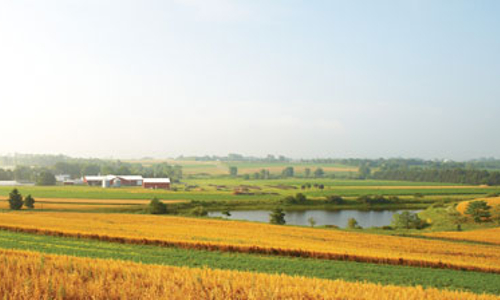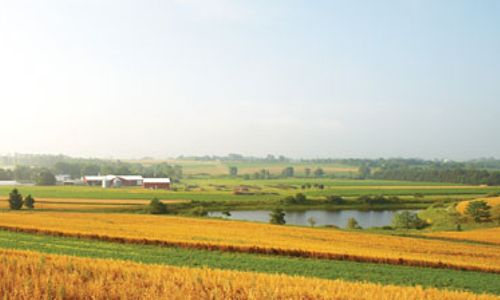


Climate change, or more accurately climate chaos, hits each and every one of us in an incredibly intimate way—right in the stomach. From the global breadbasket to our nation’s farm fields to pantries everywhere, our food supply is at risk. Climate chaos isn’t just an environmental issue. It is a grocery store issue, a dinner plate issue, a filling-our-bellies issue.

Instead of picturing graphs and thermometers and melting ice caps when we think about climate chaos, we should be seeing rolling fields of grain, vines of succulent tomatoes, lazily grazing livestock, and the faces of our neighbor farmers, both rural and urban alike, struggling and failing due to droughts, floods, super weeds and other extreme consequences of a changing climate.
There is hope and we’re standing on it. Our food supply and our farmers, both in the eye of the storm and so often contributors to climate change, could also be our salvation.
Changing the way we farm can reverse climate change.
Researchers have called it biological, ecological, progressive, pro-soil and carbon farming, among others. Add these terms on top of organic, local, free-range, sustainable, natural, fair trade, etc. and you have a recipe for mental overload.
There is one thing farms that fight climate chaos have in common. There is one sure thing that turns a farm from a contributor to climate change into a solution: Healthy soil.
At the Rodale Institute we were organic before it had a definition and, back then, soil was at the very heart of what we did. Robert Rodale called it regenerative agriculture.
Regenerative organic agriculture starts with the soil. It improves the resources it uses, rather than destroying or depleting them. It is a holistic approach to growing food that encourages continual on-farm innovation for environmental, social, economic and spiritual well being. It is an umbrella that includes practices that often fall separately under certified organic, fair trade, local, etc. and aims to continuously improve soil, food, human health, communities and the wider world.
Today we know that healthy soil is the key to climate change, food security and more. We could capture more than 100 percent of current annual carbon dioxide emissions with a switch to widely available and inexpensive regenerative organic management practices.
Climate chaos seems overwhelming and unsolvable, but we can begin reversing the destructive trend today. The answer is farming. Not just business-as-usual industrial farming, but farming like the Earth matters. Farming like water and soil and land matter. Farming like clean air matters. Farming like human health, animal health and ecosystem health matters. Farming in a way that restores and even improves our land. This kind of farming is called regenerative organic agriculture and it is the short-term solution to climate change we need to implement today.
Simply put, if we make the soil healthy, we can reverse climate change.
——–
YOU ALSO MIGHT LIKE
Stop Feeding the Beast and Start Feeding the People
How Organic Farming Can Reverse Climate Change
How Buying Local Food Grows Local Economies
——–

 233k
233k  41k
41k  Subscribe
Subscribe 